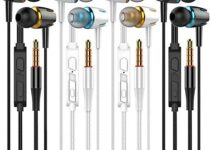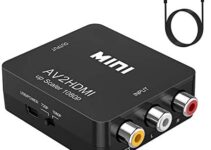:format(jpeg)/cloudfront-us-east-1.images.arcpublishing.com/tgam/KUPKXOMIVVGUFOFTROLF3FML3U.jpg)
Colin Ellis prefers to carry his Razr flip phone when he goes out for walks instead of his smartphone. It lets him disconnect but still be reachable in case of emergency.JENNA MARIE WAKANI/The Globe and Mail
Recently, when my partner and I were shopping around for bookshelves, it was hard not to notice that every hip furniture store filled their shelves in the same way: with cute little succulents, art books and architecture magazines – and, unfailingly, a record player.
It should hardly come as a surprise. As a world saturated in screens and digital tech has become the norm, there has been an increasing fetishization of an ostensibly more authentic past – marked by now-cliché tropes of reclaimed wood, Edison lamps and mason jars.
But now as we move into the 2020s, it isn’t so much that people are rejecting technology altogether as turning to older forms of it. From the return of flip phones and cassette tapes to a renewed appreciation for books and records, there is an increasing shift toward the tech of yesteryear.
There were, for example, 1.1 million sales of vinyl records in Canada last year, an increase of over 21 per cent versus 2020, according to sales tracker MRC Data. Cassette sales globally increased exponentially during the pandemic. Typewriters are having a moment, showing up on Instagram as part of an emerging old-school aesthetic.
Part of what is driving the shift, of course, is that the smartphone and related technology can be relentless, constantly beeping and distracting us with the siren call of what’s happening on Instagram or Twitter.
Colin Ellis is a TV producer and journalist, and despite working jobs that require him to stay connected and up to date with current events, about four years ago, he bought himself a flip phone.
“I feel like we’re so tied to our devices like social media and apps,” says Mr. Ellis. “I just wanted to break away from that and not be so glued to it.”
At least once a week, Mr. Ellis will go for a walk with just his flip phone so that he can still be contacted in case of something urgent but is otherwise unencumbered.
“As I’m walking you see those people on the street, and they’re not really looking up at the world,” Mr. Ellis says. “I think you miss out on things if you’re just like looking at your screens.”
Using old tech lets you skip out on some of the ways in which modern devices can encourage us to be distracted or pulled away from the present moment.
It’s that tendency toward distraction and information overload that led artist Joe Hollier and product designer Kaiwei Tang to design the Light Phone.
Looking at the landscape of tech in the 2010s, Mr. Tang decided the last thing anyone needed was another app powered by ads.
So instead, he and Mr. Hollier set out to design a phone that eschewed the glossy screen and noisy apps of a modern smartphone.
:format(jpeg)/cloudfront-us-east-1.images.arcpublishing.com/tgam/6KW35V45OVFD5B7FD4G6QRRRIE.jpg)
The Light Phone is a basic mobile phone with a black and white display and a few utilities like a calculator, directions, a simple music player and podcast tool.HANDOUT
Enter the Light Phone, a 4G mobile phone that has an e-ink, black and white display and a few utilities like a calculator, directions, a simple music player and podcast tool.
“When we were doing research, you could just sit in a coffee shop or a restaurant or airport, and everyone was ignoring what was happening around them,” says Mr. Tang. “You spend so much time touching, swiping a screen.”
Instead, the Light Phone lets you make calls, send texts, listen to music, but not much else. While it is obviously a niche product compared to the billions of smartphones, Mr. Tang states that the phone has “tens of thousands of users” and saw 150 per cent growth last year – and all this despite the fact that Light Phone has a pokey monochrome screen that is a far cry from the latest iPhone.
It’s as if there is a desire for technology that evokes a more simple, less persistently connected time.
The nostalgia for the era of analog tech doesn’t quite mean a willingness to let go of the current digital world.
Motorola was once famous for its original flip phone, the Razr, which 15 or so years ago was the height of cool. Nowadays, you can buy a Razr, but it’s a fully functional modern smartphone with a foldable screen.
Record players have bluetooth or USB connections. Even bicycles can now come with screens or apps built in.
David Sax is the author of two books on the shift toward older technology, The Revenge of Analog: Real Things and Why They Matter and the upcoming The Future is Analog: How to Create a More Human World. He argues that what’s happening isn’t just an affectation but a new way of finding balance.
“We’ve been sold this false narrative of progress – that the new thing is an improvement upon the old thing,” says Mr. Sax. “But digital technology changes the value of analog technology.”
“Its previous drawbacks or inefficiencies are now advantageous.”
Mr. Sax points to studies showing that using pen and paper helps memory retention, or that making notes during an interview can be far more helpful than scanning hours of a transcription.
So it’s not that what’s old is new again; rather, it’s that what’s old now acts as a defence against the downsides of the present. Print books allow for more focused reading. Phones with more limited functionality help you stay in the moment.
And as for those trendy record players – they can help interact with music in a renewed way.
“I bought a record player in the fall of 2020,” says Mr. Ellis. “I became obsessed; I think I’ve experienced music in a way that’s a lot better where I make a point of listening.”


